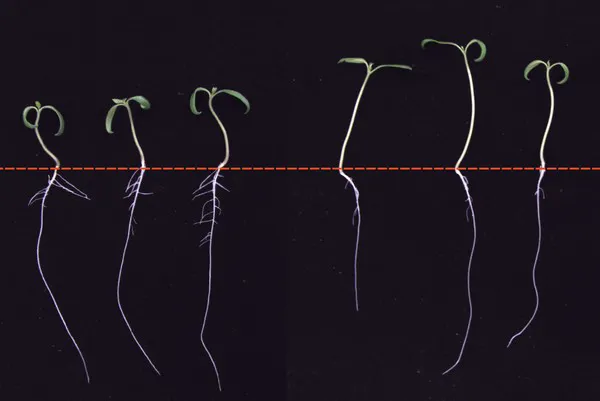When a plant finds itself in too much shade, it redirects its resources to reach for light. Crop yield and root development stall as the plant focuses on growing taller, striving to rise above neighboring plants to access the sun.
"Shade avoidance is a vital survival strategy for an organism that depends on photosynthesis, but it is a problem for farmers," says Cold Spring Harbor Laboratory (CSHL) Assistant Professor Ullas Pedmale. It limits the density at which growers can plant their crops, and thus, limits yields.
“Because of crowding, there is a competition for sunlight, so their only option is to grow taller,” says Pedmale. He adds: “The plants are putting all this energy in trying to grow taller, but now it’s at the expense of fruits that we depend on, biomass. It’s also at the expense of the roots, which don’t grow.”
Denser plant growth
Researchers have been studying plants’ shade response for decades in hopes of finding ways to help plants flourish at higher densities. Most of that research has focused on changes in stems and leaves, but Pedmale’s team wanted to know what happens underground when a plant is deprived of light. It is an urgent issue because plants without strong root systems are more vulnerable to droughts, flooding, and hurricanes - threats that are becoming more common due to climate change.
 Image: Daniele Rosado/Pedmale lab
Image: Daniele Rosado/Pedmale lab
Using tomato plants and the model plant Arabidopsis, postdoctoral researcher Daniele Rosado and other members of Pedmale’s team compared the roots of seedlings grown in full unshaded light to the shorter, less developed roots of plants grown in shade. They found that hundreds of genes that plants use to respond to stress were switched on in the shade-grown plants, including dozens that encode proteins called WRKYs, which regulate gene expression.
To confirm that they limit root growth, Pedmale’s team engineered plants in which specific WRKY genes remained highly active, regardless of conditions. They found that plants with high levels of certain WRKY proteins grew the same stunted roots seen in shade-grown plants, even when provided with plenty of light. The plant’s stems, in contrast, grew at a normal rate. In addition, they discovered that the plant hormone ethylene (required for fruit ripening) may also be involved in roots’ shade response.
Pedmale hopes that revealing these proteins’ role in shade avoidance will help researchers develop better high-yielding plants: plants that can thrive under more crowded conditions, withstand extreme weather, and maybe even reduce global warming by pulling carbon dioxide out of the air and into extensive root systems.
Rosado, D., et al., “WRKY transcription factors and ethylene signaling modify root growth during the shade avoidance response”, Plant Physiology, October 27, 2021. DOI: 10.1093/plphys/kiab493
For more information:
Cold Spring Harbor Laboratory
www.cshl.edu
